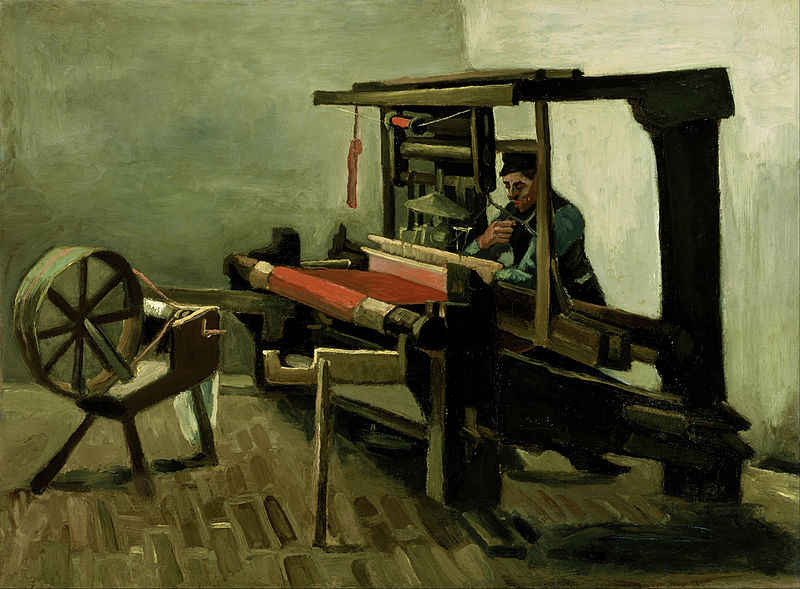|
KYSO Flash ™
Knock-Your-Socks-Off Art and Literature
|
|
|||
The Tricoteuseby Angelee DeodharA weaver who has to direct and to interweave a great many little threads has no time to philosophize about it, but rather he is so absorbed in his work that he doesn’t think but acts, and he feels how things must go more than he can explain it. A heddle made of cord or wire, suspended on a shaft of a loom, has an eye where each thread of the warp goes through. There can be near a thousand heddles used for fine or wide warps. Whether in a Charvet or a carpet of the finest silk from Herat, the weaves are similar and the warp cannot exist without the weft. This reminds me of world religions: Are we not all the warp and weft of a giant tapestry? Does it matter then which faiths we follow, whether we worship only the threads from which the fabric was woven or the fabric as a whole? Are we then the Moirai, or Madame Defarge measuring out our fellowmen’s lives in yarn to cut them down at will?
that moon again
Publisher’s Notes:
Dr. Angelee DeodharIssue 6, Fall 2016
is an eye surgeon by profession as well as a haiku poet, translator, and artist who lives and works in Chandigarh, India. Her haiku, haibun, and haiga have been published internationally in various books and journals, and her work can be viewed online, too. To promote haiku in India, she has translated six books of haiku from English to Hindi. Ms. Deodhar has edited two anthologies of international haibun, Journeys and Journeys 2015. The second volume includes a total of 145 haibun, by 31 poets of international repute. She is now working on the third collection of haibun from around the world, Journeys 2016. More on the Web: By, About, and Beyond⚡ Angelee Deodhar: A life in haiku, an interview by Raamesh Gowri Raghavan in Glo Talk (30 June 2014) |
|
Site contains text, proprietary computer code, |
|
| ⚡ Many thanks for taking time to report broken links to: KYSOWebmaster [at] gmail [dot] com ⚡ | |
